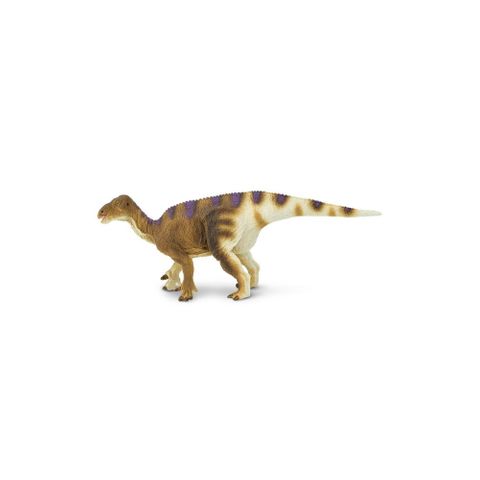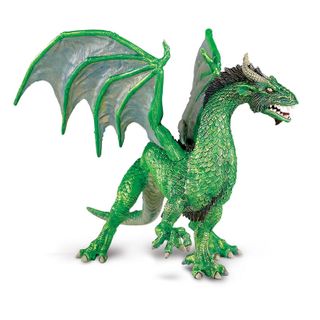
Description
Iguanodon was the first plant-eating dinosaur ever discovered, and the second dinosaur to be named. A sharp spike on its thumb provided a useful defensive weapon against predators. It occupied Europe during the Early Cretaceous, 125 million years ago.
- Scientific Name: Iguanodon bernissartensis
- Characteristics: Iguanodon is a herbivorous dinosaur, 33 feet long - the size of a small bus. It could walk on two long back legs, but spent most of its time on all fours. It has a horny beak and leaf-shaped teeth, similar to those of a modern iguana. It has a long tail and short arms with five-fingered hands. Most of its claws are blunt and hoof-like, but it has a sharp thumb spike.
- Size and Color: This dinosaur model is 7.25 inches long and 2.75 inches high. It has scaly skin with dappled shades of brown and vibrant splashes of purple along its spine.
- All of our products are Non-toxic and BPA free
History
The history of Iguanodon goes back almost 200 years. The first fossil remains of Iguanodon were collected in the 1820s from the gravels of Tilgate Forest in southern England. The fossils consisted of large teeth, similar is shape to those of a modern iguana, but much larger. These fossils were amongst the first dinosaur remains ever found. However, at that time nobody knew what a dinosaur was!
The teeth, along with some other isolated bones, were given the name Iguanodon in 1926. The name means ‘iguana tooth’. It was thought to be a giant reptile but, since this was before the word ‘dinosaur’ was even invented, the early paleontologists had a difficult task reconstructing Iguanodon from its fragmentary fossils. It was originally thought to be a lumbering four-legged monster, similar to an iguana, with a horn on its nose. Later discoveries of complete articulated skeletons led to it being regarded as a biped with a posture more like a kangaroo.
- Recommended Age: 3+
- Size in cm: 18.5 L x
- Size in inches: 7.28 L x
- UPC: 095866000578








